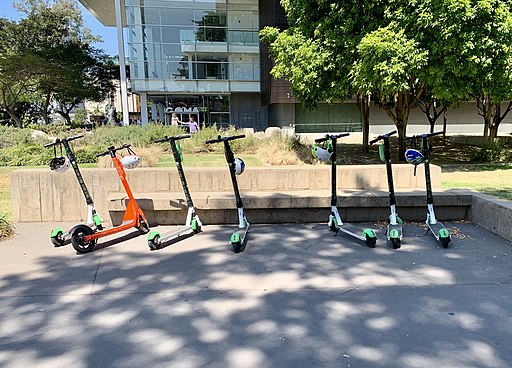
According to a study published recently in the Journal of the American Medical Association (JAMA), injuries that occur while riding electric scooters have surpassed those incurred by pedestrians and bicyclists in just a one-year period. This groundbreaking study looked at two Emergency Rooms in Los Angeles over the course of a year, from September 2017 through August 2018. Based on the injury statistics they collected, not only were more people injured from riding electric scooters than by riding bicycles or traveling on foot, but the injuries tended to be more serious, and many of them were severe.
More Injuries Than Bicyclists and Pedestrians
Over that one-year period, the study noted that a total of 249 patients were treated for e-scooter-related injuries. Of that group, about 28 percent were treated for contusions, sprains, and lacerations, while about 30 percent suffered fractures, and around 40 percent were treated for head injuries. While nearly all e-scooter patients were discharged from the emergency rooms, 15 were admitted to the hospital, including two patients with severe head injuries who ended up in intensive care units.
During the same one-year period at the two emergency departments, researchers identified 195 ED visits for bicyclist injuries and 181 visits for pedestrian injuries. According to the study, “The Riders share roads with fast-moving vehicular traffic but appear to underestimate hazards; we found that 94.3% of observed riders … were not wearing a helmet. While riders of electric scooters in California are required to be at least 16 years old by state law and 18 years old by company rental agreements, we found that 10.8% of electric scooter injuries were patients younger than 18 years.” The study added, “Although California law required helmet use while operating electric scooters during the entire study period, only 4.4% of injured scooter riders were documented to be wearing a helmet.”
A Problem That Will Take Innovation to Solve
As electric scooter companies like Bird and Lime continue to dump thousands of scooters throughout dozens of cities all over the country, this study suggests that injured e-scooter riders will begin to flood emergency rooms, as well. And ER doctors have been documenting – and will continue to do so – the injuries, in order to get a sense of the effects of the e-scooter dump on each city.
Some health professionals have referred to the wave of e-scooter injuries as a “public health crisis.” Toward the end of 2019, the Centers for Disease Control and Prevention (CDC) announced plans to study the health risks associated with e-scooters by analyzing injuries to riders and pedestrians in Austin, Texas over a period of several months.
E-scooters are not just injuring those who ride them. According to an article in the Washington Post earlier this year, the medical director of the Nethercutt Emergency Center at the UCLA Medical Center in Santa Monica, California, Wally Ghurabi, declared that e-scooters pose significant dangers to elderly pedestrians and the disabled. According to Ghurabi, “I’ve seen pedestrians injured by scooters with broken hips, multiple bone fractures, broken ribs and joint injuries and soft tissue injuries like lacerations and deep abrasions.” Ghurabi said, estimating he sees several people injured by e-scooters each week.
This JAMA study seems to be the first comprehensive study of injury patterns associated with e-scooters so far, and it offers a window into how people are using the new form of technology. Over the past year or so, numerous e-scooter riders have reported being injured by scooters that malfunction, throwing riders off the vehicles at high speed. Last year, Lime — one of the world’s largest scooter companies — had to issue two recalls after The Washington Post reported that some scooters were equipped with batteries capable of catching fire and others had baseboards that split in half while people rode them.
Everyone Agrees That Safety is a Priority
In a statement the company emailed to the Post, Lime said the safety of riders and the community is the company’s “number one priority.” Lime said it has upgraded its scooters with better wheels and suspension, as well as additional braking and improved balance. They also noted, “We believe continued government investment in protected bike lanes and paths is critical. Lime supports the AMA’s study recommendations to further innovate helmet designs and for the industry to continue focusing on safety.”
Likewise, Paul Steely White, who is Bird’s director of safety policy and advocacy, said his company hopes for an opportunity to have a “collaborative conversation” with the study’s authors focused on “proven preventative measures and education. While the report importantly highlights the parity in safety between bicycles and e-scooters, it fails to take into account the sheer number of e-scooter trips taken — the number of injuries reported would amount to a fraction of one percent of the total number of e-scooter rides,” White said. “Moreover, the report fails to put e-scooter injuries into context as they relate to the high number and severity of injuries and deaths caused by motorcycles and automobiles.”
There is little doubt that cities that adopt e-scooters as an alternative mode of transportation for its citizens have to take safety more seriously. Until they do, the injuries will continue to mount and pedestrians and others will be at greater risk. Innovative alternate forms of transportation often require innovative approaches to safety and security to keep everyone safe.
